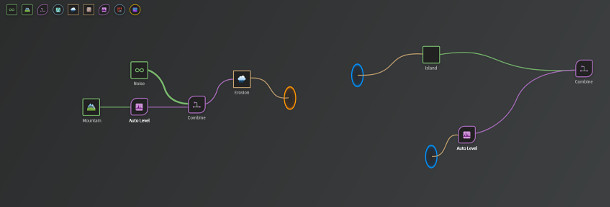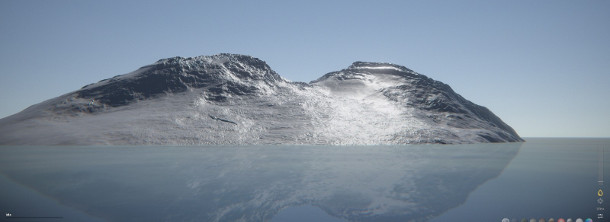QuadSpinner releases Gaea in early access
QuadSpinner has released Gaea, its hotly tipped new terrain design tool, in early access.
The software, which is due for a full release next quarter, provides an artist-centric approach to terrain generation for games, combining powerful procedural controls with a range of direct input methods.
From World Machine plugins to standalone tools
Best known for its popular GeoGlyph add-on for World Machine, QuadSpinner has been developing its own standalone terrain-generation tool for some time now.
Originally known as The TOR Platform, the software entered beta last year, before re-emerging in its final form as Gaea earlier this month.
Powerful procedural terrain generation plus artist-friendly direct sculpting
Gaea’s key selling point is its combination of procedural terrain generation with artist-friendly editing tools.
As well as a conventional graph interface, along the lines of that in World Machine, users can control terrain forms through Photoshop-style layers or direct sculpting.
The latter workflow can be seen in action in the video at the top of the story, which shows the software’s directed erosion system, enabling users to ‘paint’ erosion strokes onto 3D geometry.
Strokes can influence one another through the flows of sediment they generate, and an undo stack makes it possible to revert results you don’t like and try again.

Neat innovations in visual programming
The graph interface itself also comes with several nice usability touches, like customisable widths and colour for wires, and even Valve-style orange and blue ‘portals’ to link groups of nodes.
For direct parametric input, sliders come with their own history stacks, support for microincrements, and predictive values – making it possible to start from a ‘best guess’ at the appropriate setting.
Other neat procedural systems include a Heal node, designed to “reconstruct damaged, low-res or 8-bit [terrain] data with 16-bit, high-resolution fidelity”.

Real-time 3D viewport based on the Unity engine
The resulting terrain can be visualised via a real-time display based on the Unity game engine, making it possible to switch between 2D orthographic and 3D orbit or first-person views.
Graphically, the viewport supports custom HDR skyboxes, a sunlight system with terrain shadowing, reflective water surfaces, and a range of post-processing effects like film grain, LUTs and depth of field.
Once created, 3D terrain can be exported in OBJ, FBX or DAE format, and 2D heightfields in a range of 16- and 32-bit formats, including OpenEXR, RAW, HDR and PSD.
Not fully GPU-accelerated, but designed with speed in mind
The software isn’t fully GPU-accelerated: although some “experimental” nodes run on the GPU, with more planned for the future, the majority of calculations are performed on the CPU.
However, there are a number of interesting design choices intended to keep processing times down.
These include a ‘Post Process stack’ that runs on top of the underlying node graph, making it possible to perform simpler operations without creating additional nodes, reducing their impact on build times.
Pricing and availability
Gaea is available in early access for Windows 7+ – there isn’t a Mac or Linux version – with the official 1.0 release due in “early Q2 2018”.
The Indie edition, which caps export resolution at 4K, costs $99; the Professional and Enterprise editions, which provide unlimited resolution plus a range of advanced features, cost $199 and $299 respectively.
All three editions are available at a discount during the early access period, and further discounts are available to registered users of GeoGlyph 1 and above.
Read an overview of Gaea on QuadSpinner’s website
Read a more detailed discussion of the software’s key features on QuadSpinner’s blog
